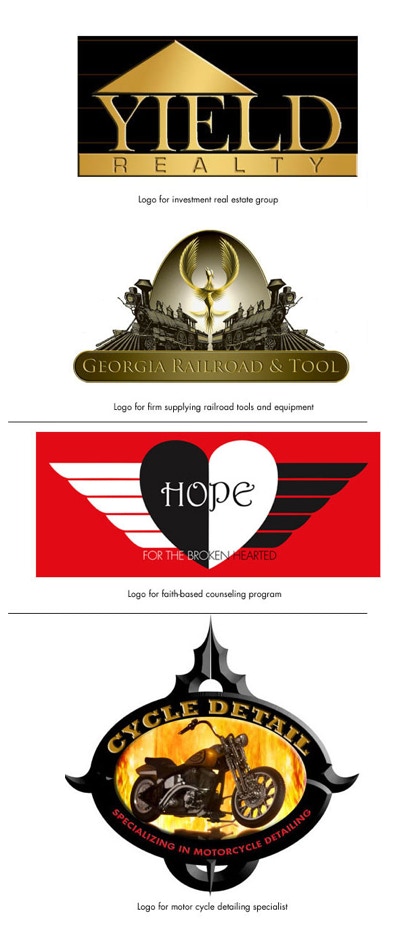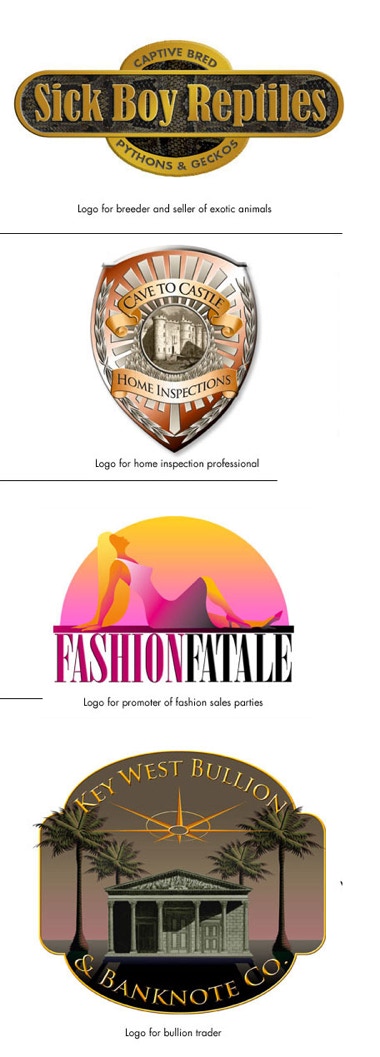
The Entrepreneur’s Guide
to Effective Logo Creation
I’ll always remember a conversation with a friend who had recently been appointed Senior Vice President for a chain of luxury department stores with a hyphenated name (guess who). For decades their logo consisted of the two names separated by a hyphen in a formal-looking brush script. My friend had recently engaged one of the country’s premiere design firms to “rethink and update” the logo. He produced a large leather-bound portfolio from his desk and proudly unveiled the results of the work. As I stared at it I was reminded of the Hanns Christian Anderson story of the King’s New Cloths. Because, on first examination, I couldn’t see any difference between the old logo and the new one.
I guess my long silence alerted my friend that I was confused. After a moment he said, “don’t you see, they removed the hyphen.” After much closer examination, I realized they not only removed the hyphen but also redrew the script to give it a slightly more contemporary feeling. The project also included a completely new and original serif text face, designed to be used in conjunction with the logo and what is known in the trade as a comprehensive application manual (or CAM). These manuals are an exhaustive study of every possible application of the logo, from letterheads and newspaper ads to trucks and warehouse facilities. Every conceivable situation is considered and illustrated. Even examples of how not to use the logo are included. The cost of this massive project, including extensive customer testing had been over $100,000. That was in the late 1980’s. Who knows what it might be today.
I was horrified that my friend had literally doubled the reported cost of United Airline’s $50,000.00 logo redo only a year earlier. At least United had gotten an entirely new corporate look. I smiled politely and said something meaningless like, “nice job . . . really first rate,” and retired to contemplate the future of corporate design, or, in my friend’s case, non-design.
I mention this only to illustrate the potential for waste in corporate design. What my friend had actually purchased was about $5,000.00 worth of useful design, another $5,000.00 in typographic service (that could have been replaced by using an existing type face) and $90,000.00 worth of hand-holding by a firm skilled at supporting frail corporate egos with meaningless market research. Those of us who have spent any time around an advertising agency know that any research project can be skewed to produce the results the agency wants. The function of market research is not to find the best solution, but rather to reinforce the case for the solution the agency wants to sell. Relatively few businesses can afford this extravagance, certainly not entrepreneurs in a start-up mode.
On the opposite end of the spectrum, I see offers to create logos for as little as $19.99 on eBay and other internet sites. Some of these offers are obviously from students who have just taken a night-school course in the use of Adobe Illustrator and others are from massive “boiler-room” shops where novice designers and designer want-to-bes toil over predesigned templates, producing look-alike solutions.
What, then, does it take to produce an original logo or corporate identity at a reasonable cost? To answer this, I must ask one more question. “What is your objective in creating a logo?” If you are planning to use the logo for a brief stint in an eBay store, the $19.99 version may be just what you need. If, however, you are hoping to build long term public recognition of a substantial enterprise, either on or off the web, the help of an experienced creative designer is required.
This might be the right place to make an important distinction between designer and technician. Hardware and software marketers have promoted the fallacy that the designer has been made redundant by their creations. Nothing could be further from the truth. Technology has certainly enhanced design, but not replaced it. Those who have suffered most from this deception are the unsophisticated students who takes a course in one software program and believes they are now designers (and the unsophisticated client who also believes this is true).
The development of great design skill requires a lifetime of critical examination and trial-and-error experimentation. Learning to develop appropriate imagery that focuses on the desired audience and translates across a wide range of media takes not only intensive training but a willingness to immerse oneself in the business of creating images.
How can an otherwise over burdened entrepreneur identify such skill? As always, by asking the right questions:
What questions? Click here for the answer.

